Given how rare Sunbeam Tigers are nowadays, we were delighted to come across such a pristine looking example at a recent Cars & Coffee event near Cincinnati, Ohio—and were downright gobsmacked when we heard about its 181.6 mph Land Speed Record in the ECTA Land Speed Racing C/GSS class.
So we figured you may want to learn about this incredible Ford V8-powered British roadster too.
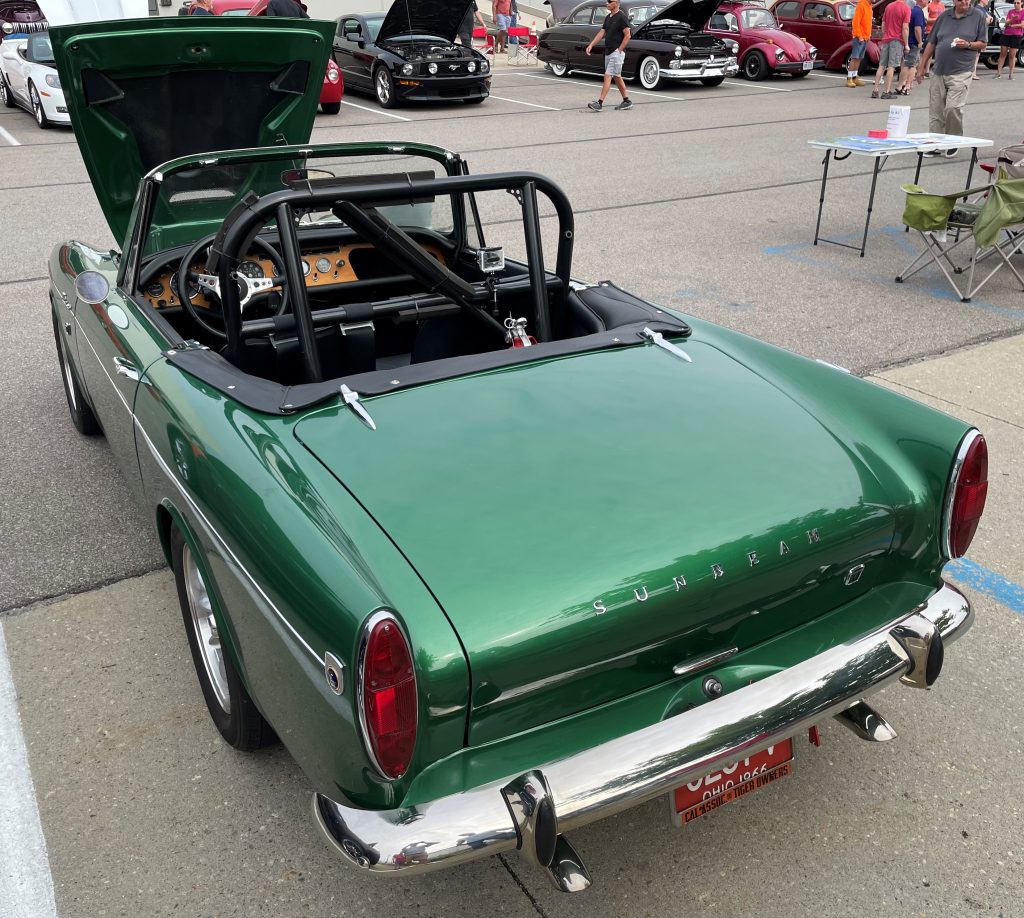
What is a Sunbeam Tiger?
But first, let’s start with some history. The Tiger story begins with the Sunbeam Alpine, a sporty two-seat roadster from the London, England-based Rootes Group.
The Alpine was equipped with a four cylinder engine making a tad shy of 100 horsepower, and while that was enough power to scoot around tight European streets, if the Alpine was going to head across the pond, it needed a bit more oomph.
Enter Carrol Shelby.
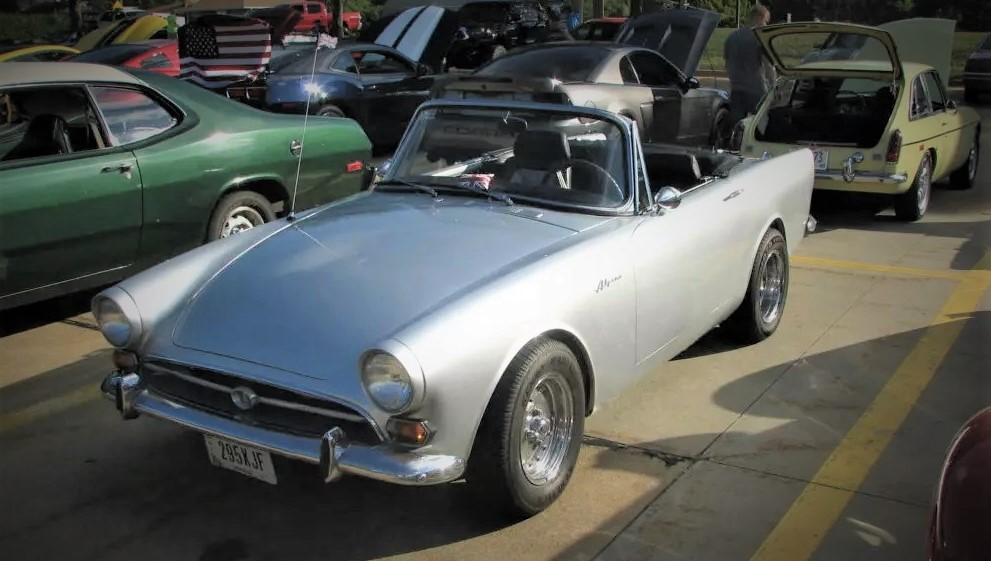
Upon a request from Rootes, Shelby wedged a Ford 260 V8 under an Alpine’s hood, much like he’d done a few years earlier with the A.C. Ace in creating the Cobra. Curiously, a colleague of Shelby’s, the legendary Ken Miles, was asked to develop another 260-powered Alpine almost simultaneously.
Both cars were used as proof-of-concept vehicles to assess the project’s feasibility.
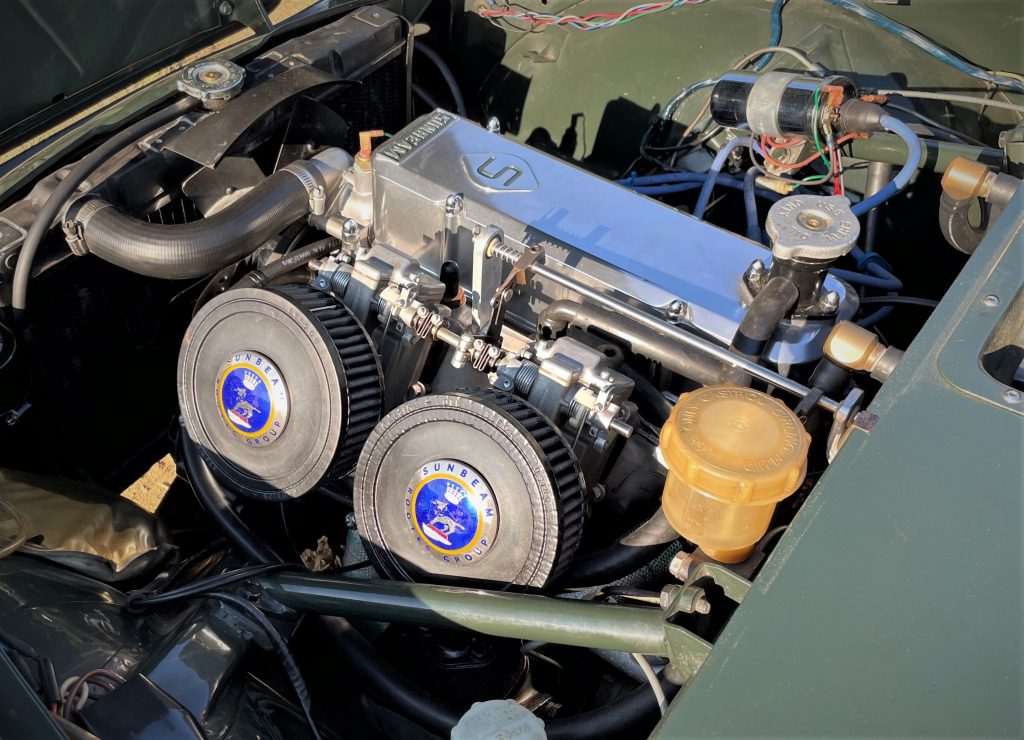
Once the logistics of fitting a V8 in the Alpine’s tiny engine bay were hammered out (figuratively and literally), it was rechristened the Tiger and the Rootes Group outsourced the job of modifying the roadsters to Jensen Motors Limited in nearby West Bromwich, U.K.
Soon after that, Sunbeam Tigers started heading across the Atlantic.
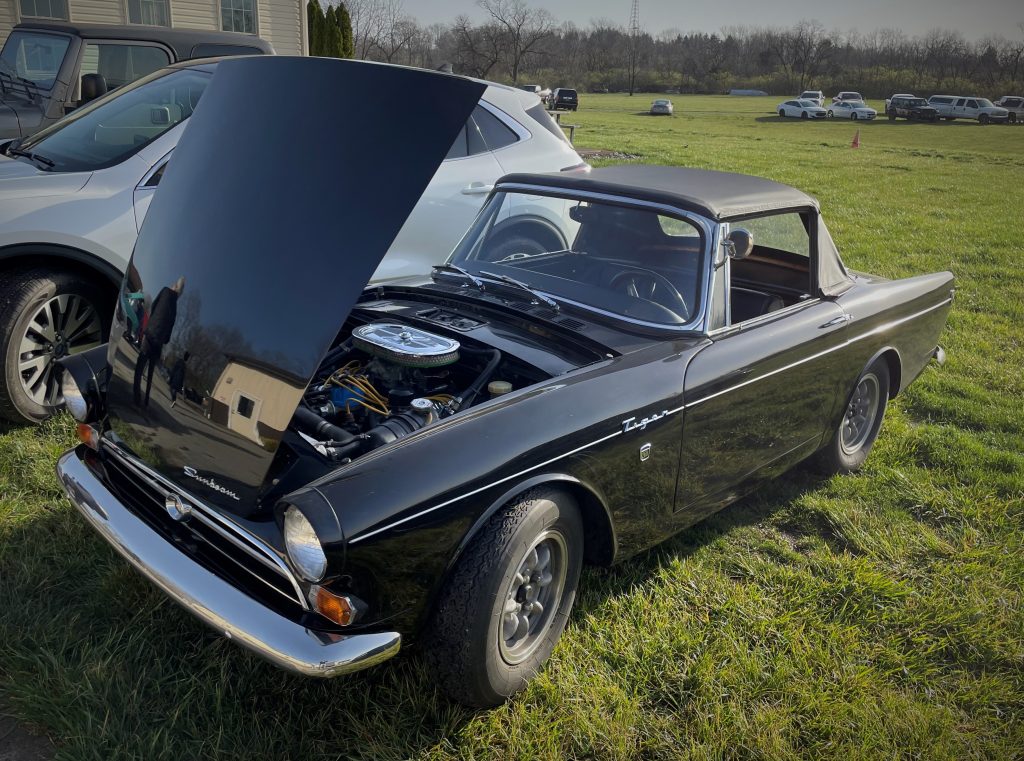
Early Mk. 1 Tigers featured the 260 Ford V8 good for around 164 horsepower, while later a small number of Mk. 2 Tigers were built with a Ford 289 that moved the number to about 200 hp (on paper at least, as either engine took well to basic upgrades that increased power output).
Problem was, the Rootes Group was in dire financial straits by the mid-1960s and the company was eventually purchased by the Chrysler Corporation—which wasn’t exactly thrilled with making a niche car powered by a competitor’s engine.
So despite being potent performers and well-received by enthusiasts, production was summarily halted after a run of around 7,000, with an estimated 5,000 Tigers winding up in the United States.
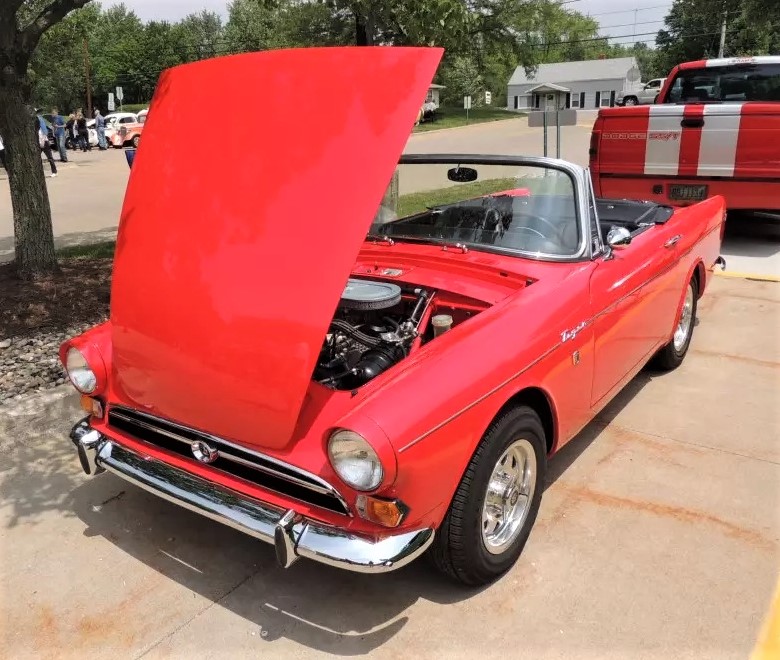
Meet Hugh Guynes & His Record-Holding 1966 Sunbeam Tiger
We came across this Tiger at a recent Cars and Coffee show and, while we were initially drawn to its vibrant green paint, we dang-near fell over when we spotted its 181.6 mph ECTA Land Speed Certificate.
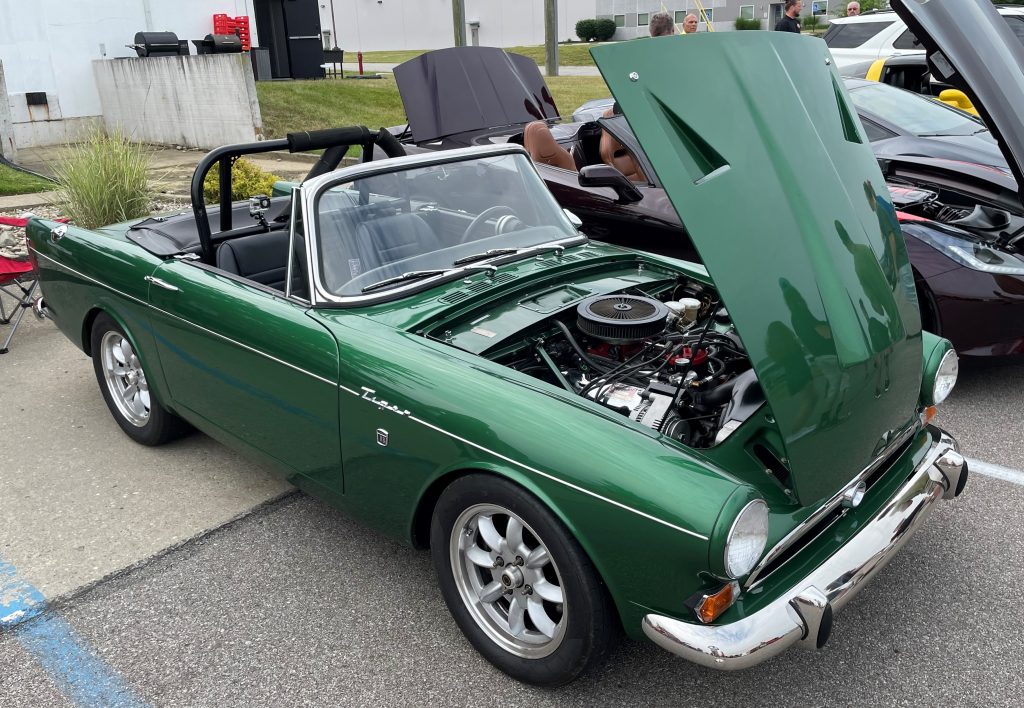
The car’s owner is Hugh Guynes, and he’s no stranger to Sunbeam Tigers. “This is my fifth one,” he says. “And I’ve had it for almost 20 years.”
In addition to being an all-around good guy, Hugh’s a pilot, builder, and racer, and those passions have culminated in a street legal British roadster that can dance up to 180 mph.
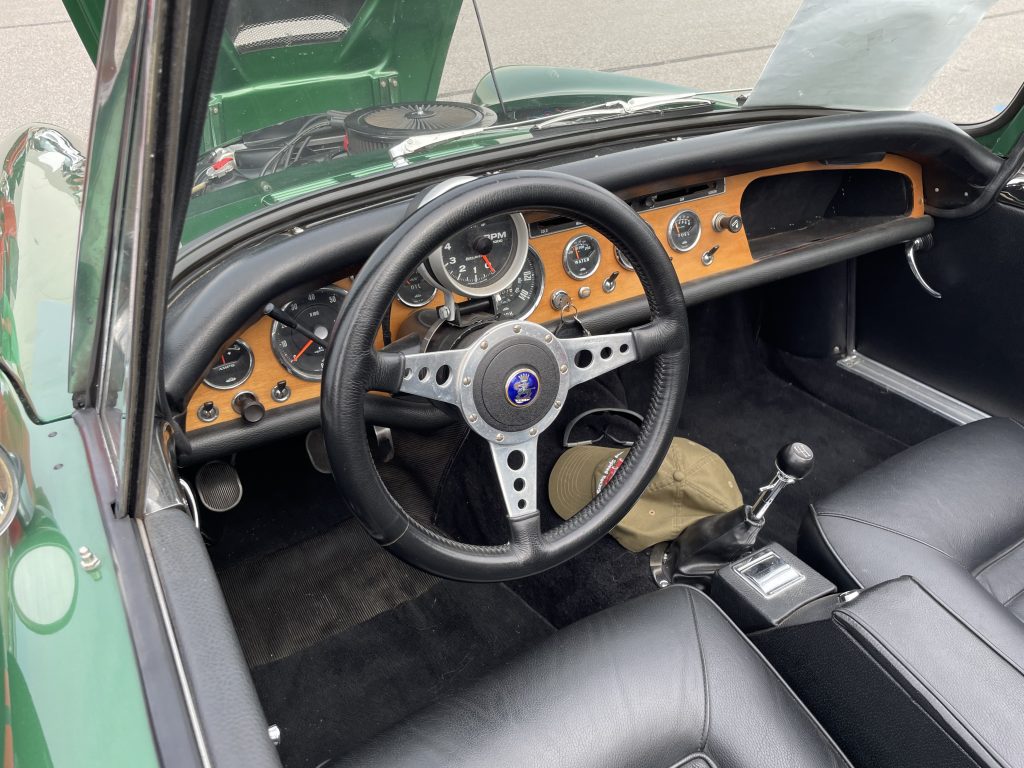
“I’ve always drag raced and autocrossed it,” he explains. “But when [ECTA] opened up Wilmington, I said ‘I’m gonna go do that.'”
For years now, Hugh has campaigned in ECTA Land Speed Record events, first at the aforementioned Ohio Mile in nearby Wilmington, and then at the Arkansas Mile, about a day’s-drive away in Blytheville—and Hugh describes the fateful trip that secured his record.
“I’ve been there three times. The last time I was there, a Z06 C7 [Corvette] was there, an Audi R8, and there was an engineer in a Hellcat doing transmission durability testing,” he recounts.
“For three days, we all ran one right after another. I was faster than all of them,” Hugh laughs. “I ran 182 miles an hour. On the last day, the Hellcat finally broke 180.”
Summit Racing took its modified Tesla Model 3 to the ECTA Arkansas Mile event a few years ago. Read all about it in this White Lightning Tesla Project update.
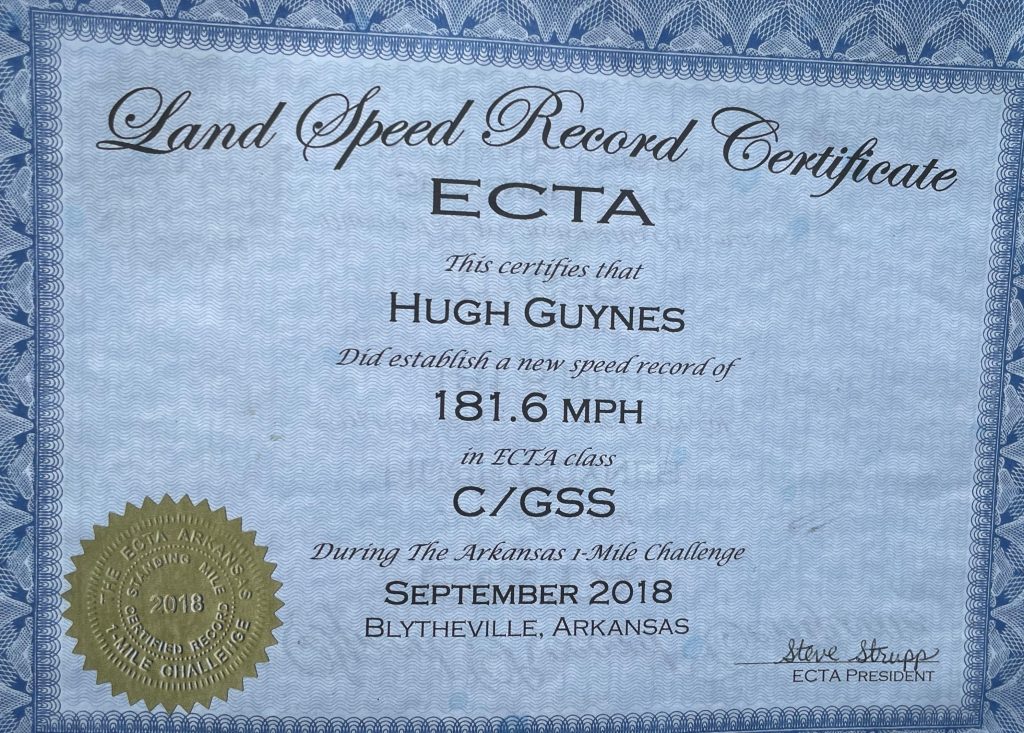
Though Hugh also describes some inital growing pains with the Tiger, early in its Land Speed Racing career. “At the time [in my class], you were only allowed to go 155 miles an hour, because it wasn’t really a street car thing,” he grins. “The speedometer only goes to 140.”
So Hugh got his calculator, checked his gear ratios, and determined that 155 mph was exactly 5,300 rpm in top gear.
“I got to 155 about two-thirds down the track and held it,” Hugh explains. “I pull off after the run, and the guy comes out of the timing booth waving me down.”
There was a problem: Hugh forgot he had a 0.75:1 overdrive instead of a 0.80:1, so what he thought was 155 mph was actually north of 164!
Mathematical mishaps aside, Hugh was undaunted after that initial effort, and the ECTA folks welcomed him back in subsequent years to reach ever-increasing speeds.
Upgrades to Hugh’s 1966 Sunbeam Tiger

The original Ford 260ci V8 is gone, replaced by a 363 small Ford stroker featuring an all-aluminum block made by Ford Performance in the 1990s. The engine was put together by Hugh’s pal, former GM engineer, racer, and noted Mustang expert Paul Faessler with Paul’s Automotive Engineering.
“I said build me the strongest motor that that’ll run on Shell 93,” Hugh quips. “I don’t want to mix gas.”
The result is a potent pump gas powerplant with 10.75:1 compression that’ll spin up to 7,000 rpm. It’s internally balanced, with a lightweight aluminum Fidanza flywheel that weights a mere 13 pounds.
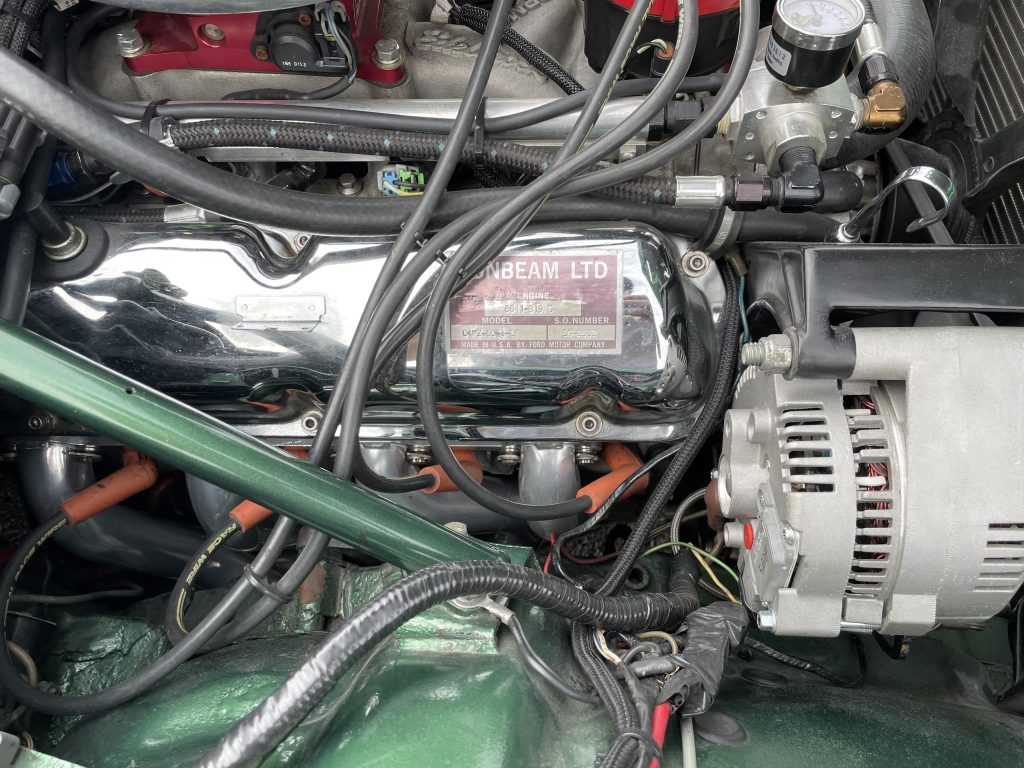
Behind that engine is a Tremec manual transmission connected to a chromoly yoke and a three inch diameter driveshaft secured with 1350 U-joints.
After tearing up a handful of Sunbeam rear ends, Hugh had Moser Engineering cut down a Ford 8.8 inch from a Mustang to handle the extra power. Inside that 8.8 is a Ford Performance Torsen differential.
“The Mustang guys that drag race use the same rear end and they’re making 2,000 horsepower,” Hugh jokes. “The clutch is the weak point. It’s a single disc clutch, because the car only weighs around 2,350 pounds.”
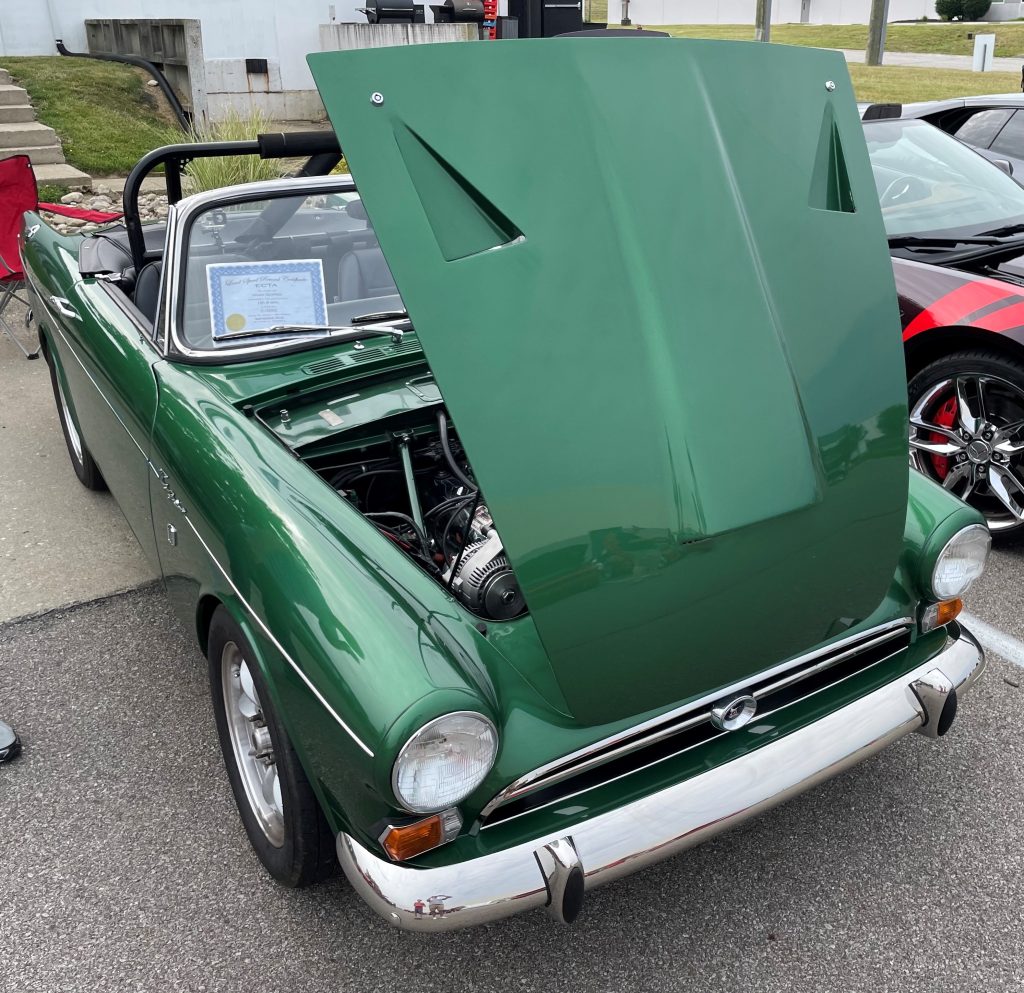
The Tiger runs a full coilover suspension, with an adjustable dual action Coleman third link out back that allows Hugh to set preload and mitigate wheel hop. For his speed runs, Hugh fits the Tiger with its original Sunbeam hardtop, and the car benefits from a custom front air dam and some other modest aero improvements.
We asked Hugh how the whole setup drives, and he quickly responds with a smile, “It goes up to 170 real fast, and then creeps up from there.”
Best of all, Hugh’s got the video footage from his record run to prove it:

Congrats on a remarkable achievement: Avery well sorted car fer sure!
Back in 1968 we got the old #78 to run thru a VASCAR measured mile at 168.3 using a high rev 289. Very scary, nowhere near safe and it happened just once. Surviving young & dumb requires an overworked guardian angel. Still have the car in docile condition now better suited for quiet aged driver.
at a loss for words. Having owned cobra jets, Grand National, 440-6 cuda , my Tiger remains the favorite.
I’ve seen 130 mph in mine with much taller tires; felt very unstable given short wheel base. 180 mph is faster then
I go when flying my helicopter. Sheesh! Just love such a fine car reaching 180 mph. Insane grin appears
when thinking of it. Soon my Son will get my Tiger. I bought it in 73′ so its time for the next generation. He already
loves it. Soon he will be 35 yrs old. He has waited long enough. Now how do I get that grin off my face?
Best
Likely due taller tires, I might have hit 130-135 in my 66′ Mark 1-A transition body style Tiger.
Wheel base too short for me. It was twitchy and felt on the edge of losing control? No matter, got there
once and have held it down ever since. Love the Tiger over my 87′ Grand National, 440-6 Cuda’ and equal to
my two 69′ Mustang 428 cobra jets, shaker and drag pack 4-speed. Hard to not pick the Tiger as favorite.